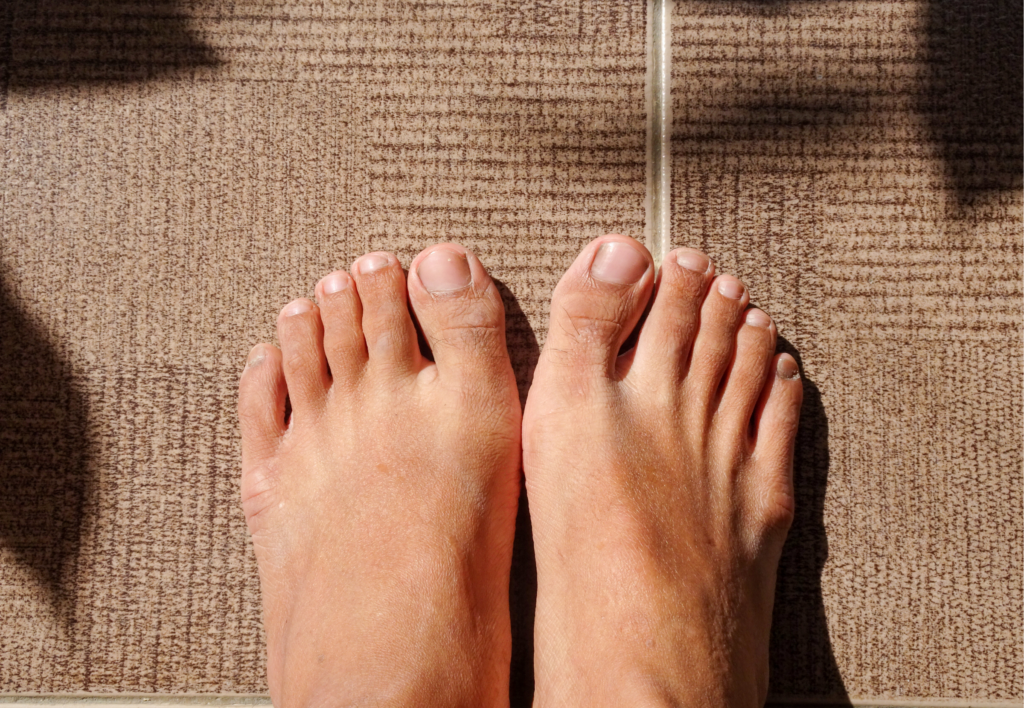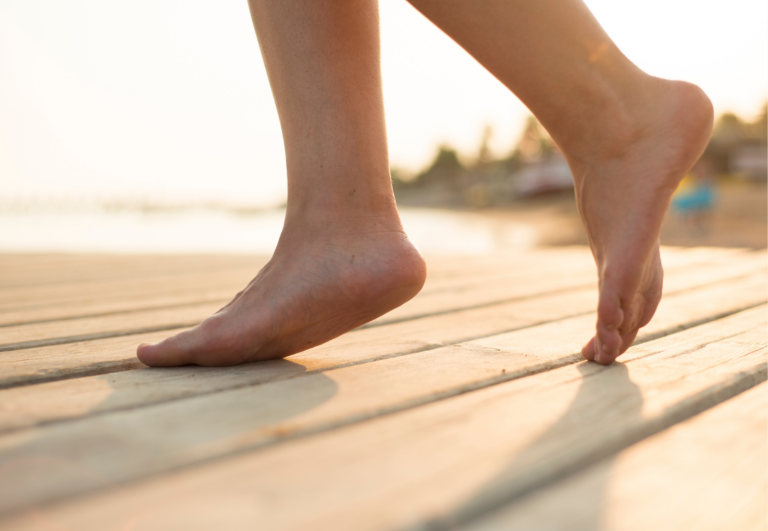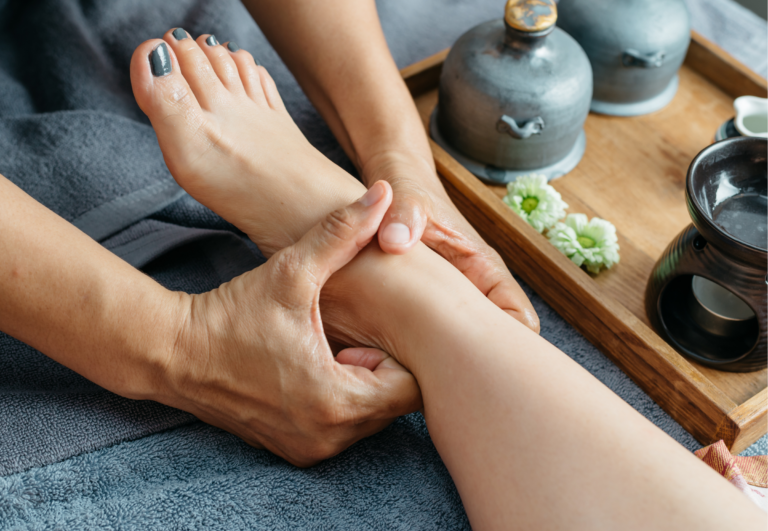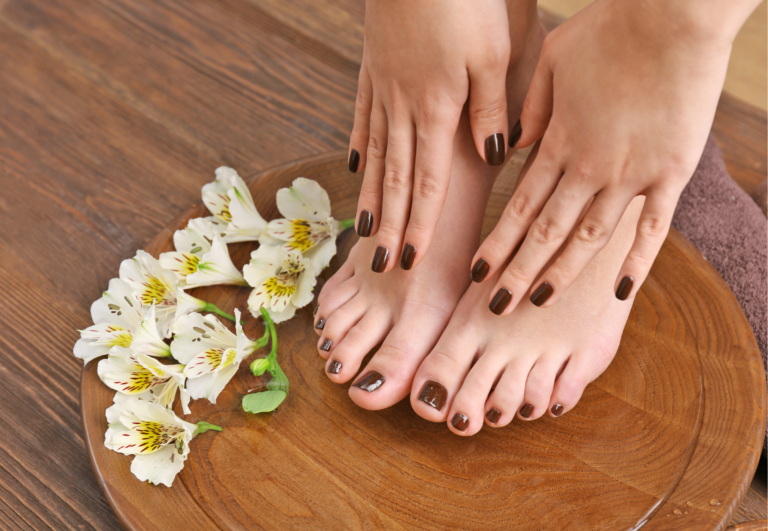Using Toe Spacers with Orthotics: Enhancing Foot Alignment and Comfort
Toe spacers are devices designed to maintain natural toe alignment, addressing problems stemming from toes being squeezed together by conventional footwear. I’ve found they offer an alternative route towards foot comfort and support, promoting the natural splaying of toes. Their benefits include the potential to reduce pain, enhance balance, and improve the overall function of the feet.
When considering the use of toe spacers, it’s essential to take into account their relationship with orthotics, which are custom-designed inserts providing arch support and aiding in the correction of foot alignment. While toe spacers focus on the separation of toes to aid in foot health, orthotics provide structured support from under the arch. The two products cater to different needs, yet share a common goal: to improve foot comfort and function.
I’ve noticed that integrating toe spacers into a foot care regimen where orthotics are already in use can be challenging. While orthotics are specifically designed to fit the unique contours of your arch and the shoe they are placed in, toe spacers sit between the toes and may not always sit well with the added bulk of orthotics. Their simultaneous use should be approached with care to avoid discomfort and ensure each product can perform its function without interference.
Toe Spacers and Orthotics – What’s the Link?
To maintain foot health, considering the intricate anatomy of the foot is vital. I’ll discuss how toe spacers and orthotics play a role in supporting foot structure and can aid in the relief of various foot conditions.
Toe spacers and orthotics serve different purposes for foot health, and their relationship can be complex.
Toe spacers are designed to spread the toes to their natural position, which can help with toe alignment, relieve pressure on bunions, and improve balance and foot function. They work by physically separating the toes, which can sometimes alleviate pain and discomfort from conditions like hammertoes, bunions, and overlapping toes.
Orthotics, on the other hand, are custom-made or over-the-counter shoe inserts designed to support and improve the function of the foot. They can help manage a variety of foot conditions by providing arch support, redistributing pressure, and aligning the foot to reduce stress on joints and soft tissues.
Using toe spacers and orthotics together is not typically recommended because they can work against each other. Orthotics often control the position of the foot and redistribute pressure, while toe spacers aim to allow the toes to splay more naturally. When used together, the toe spacers may push against the orthotic material, leading to discomfort or misalignment.
However, some practitioners may recommend using both in specific cases, depending on the individual’s foot condition and needs. For example, a person with a bunion might use an orthotic to correct overall foot alignment and a toe spacer to specifically address the deviation of the big toe.
It’s essential to consult with a healthcare professional or a foot specialist to determine the best approach for your specific situation. They can assess whether using toe spacers, orthotics, or a combination of both is appropriate for your foot health and how to use them effectively.

Anatomy of the Foot
The foot is a complex structure comprising bones, ligaments, muscles, and joints, which work together to provide support and balance. Its design includes the medial longitudinal arch, a key aspect that contributes to the foot’s ability to distribute pressure during activities such as standing, walking, and running.
Benefits of Toe Spacers
Toe spacers are designed to correct toe alignment, spreading the toes to their natural position. They can provide relief from conditions like bunions, hammertoes, and corns. Regular use of toe spacers may alleviate pain and improve balance by reducing pressure on the joints and soft tissue of the foot.
- Pain Relief: Reduces discomfort from overlapping toes and pressure points.
- Alignment: Encourages toes into a more natural and functional position.
Role of Orthotics in Foot Health
Orthotics are inserts placed inside footwear to support the foot’s arch and improve alignment. They are often custom-designed to fit comfortably within one’s shoes and can be a critical treatment for flat feet, providing arch support to distribute weight more evenly.
- Support: Enhances stability for flat feet and various foot conditions.
- Comfort: Tailored design fits the unique contours of your foot.
Combining Toe Spacers with Orthotics
Using toe spacers in conjunction with orthotics can complement each other effectively. While toe spacers target the alignment of toes, orthotics lend support to the arch and the rest of the foot. Together, they work to distribute pressure evenly across the foot, enhance comfort, and may aid in a more comprehensive recovery.
- Design: Ensures the fit of orthotics and toe spacers accommodate each other.
- Recovery: May improve treatment outcomes for foot deformities and pain by addressing different aspects of foot health.
Types and Materials of Toe Spacers and Orthotics
When considering toe spacers and orthotics, the variety of types and materials available allows for tailored support and comfort. It’s crucial to understand the different designs and materials to make an informed choice that enhances alignment and recovery.
Different Designs of Toe Spacers
Toe spacers come in multiple designs, each addressing specific needs. Some are crafted for the big toe, ensuring proper alignment and reducing friction between toes. Gel toe spacers are popular for their softness and adaptability to the foot’s shape, often providing a comfortable, cushioned experience. Silicone toe spacers are designed to fit snugly while offering flexibility and tenderness for daily wear.
- Standard Spacers: Typically placed between the big toe and second toe.
- Full Splay Enhancers: Fit all toes for comprehensive alignment.
Materials Used in Orthotics Manufacturing
Orthotics are commonly made from a range of materials, each chosen for its properties such as durability, support, and comfort. Medical-grade gel is a common material due to its shock-absorbing qualities and comfort level. Silicon, another frequently used material, offers a balance between firmness and flexibility, providing support while allowing for natural foot movement.
- Medical-Grade Gel: For cushioning and resilience.
- Silicon: Balances support with flexibility.
- Foam: Generally lighter and may offer specific adjustments for comfort.
Selecting the Right Combination
Pairing toe spacers with orthotics requires careful consideration to ensure they work in harmony. Check the materials and designs for compatibility—gel or silicone toe spacers can complement soft orthotics, enhancing comfort without excess bulk. When merging these tools, ensure they contribute to your recovery and daily comfort without causing additional friction or discomfort.
- Comfort Match: Ensure materials of both the toe spacers and orthotics provide comfort without bulk.
- Support Synergy: Verify that support levels align for your needs.
- Avoiding Friction: Choose combinations that minimize friction for a smoother recovery phase.
Proper Usage and Maintenance
Incorporating toe spacers and orthotics into your routine can improve foot alignment and comfort. Proper usage and diligent maintenance are crucial for maximizing their benefits, including pain reduction and recovery support.
How to Wear Toe Spacers Correctly
To ensure toe spacers effectively support alignment and comfort, it’s important to wear them correctly. Always start by cleaning your feet to maintain hygiene. Place each toe spacer carefully between toes, confirming they fit snugly without causing discomfort. Silicone toe spacers are a popular choice as they often provide a comfortable fit and adapt to the shape of your toes. Follow these steps:
- Begin with the big toe and progressively move to the smaller toes.
- Make sure the spacers sit flush against the skin.
- Adjust for any overlapping or pinching.
Remember, the goal is to gently stretch the foot muscles, tendons, and ligaments without overextending.
Cleaning and Caring for Orthotics
To prolong the durability and function of your orthotics, regular cleaning is essential. Follow these instructions:
- Remove orthotics from your shoes after use.
- Use mild soap and water for cleaning; avoid harsh chemicals.
- Air-dry completely before placing them back in shoes.
This routine avoids the buildup of moisture and bacteria, which can lead to odors or degradation of materials.
Duration and Frequency of Use
The duration and frequency of using toe spacers vary depending on the individual’s needs and the specific foot condition. As a general guideline,
- Start with short intervals (20-30 minutes) and gradually increase as comfort permits.
- Use toe spacers daily to maintain stretches and improvements in alignment.
Consult with a professional for personalized advice, especially if you experience persistent pain or discomfort.
Common Foot Conditions and Treatments
In addressing foot conditions, treatments often include devices and strategies that can alleviate pain and correct structural issues. These methods vary based on the specific condition treated and aim to provide relief from discomfort and improve foot function.
Addressing Bunions and Hammertoes
I find that bunions, which are painful bony protrusions at the big toe’s base, and hammertoes, characterized by a bent middle joint, often respond well to consistent use of toe spacers. These tools can help realign the toes, reducing pressure and the progression of the deformities.
- Treatment Options:
- Toe Stretchers: Used during rest to encourage realignment.
- Night Splints: Worn overnight to maintain proper toe positioning.
- Supportive Footwear: Shoes with a wide toe box to ease bunion pain.
Relieving Plantar Fasciitis and Heel Pain
Plantar fasciitis, a common cause of heel pain, involves inflammation of the band of tissue running underneath the foot. Orthotics that provide good arch support can reduce tension, and I’ve learned that combining them with cushioned heel inserts often helps manage discomfort effectively.
- Treatment Components:
- Arch Support: Critical for redistributing pressure and providing relief.
- Heel Cushions: Offer additional shock absorption and comfort.
Preventing and Treating Corns and Calluses
Repetitive friction and pressure can lead to corns and calluses, which are areas of thickened skin on the feet. I advocate for using toe separators to reduce the pressure that often exacerbates these conditions. For individuals with diabetes, who are prone to foot problems, using padding and protective coverings around susceptible areas can help prevent the development of these painful lesions.
- Preventive Measures:
- Cushioning Pads: Protects areas at high risk for corns and calluses.
- Proper Footwear: Reduces areas of excessive pressure and friction.
In managing foot conditions, my experience suggests that validating the suitability and effectiveness of treatments such as toe spacers and orthotics for individual needs is crucial for preventing further complications. It is always recommended to consult with healthcare professionals for personalized advice and treatment plans.
Expert Insights and User Experiences
When combining toe spacers with orthotics, it is crucial to understand the recommendations from podiatry professionals and the accounts of individuals who have incorporated these tools into their routine. They offer a unique dual approach for managing foot conditions, providing both alignment and support.
Podiatrist Recommendations
Podiatrists, such as DPMs (Doctors of Podiatric Medicine), often suggest toe spacers like YogaToes or PediFix when addressing issues like bunions, hammertoes, or for the enhancement of foot strength and balance. Dr. Emily Splichal, a noted podiatrist, advocates for their use as a non-surgical treatment option that can assist in alleviating pain and improving comfort. Specifically, toe spacers are emphasized for:
- Comfort: They create space between the toes to relieve pressure.
- Pain Relief: They can help in reducing discomfort from toe overlaps.
- Foot Strength: Encourage proper toe alignment and may strengthen foot muscles.
Real-life Success Stories
Many users have found relief by including toe spacers in their foot health regimen. For instance, athletes have identified that the consistent use of toe spacers, especially highly-rated brands like YogaToes, has provided noticeable benefits in terms of:
- Enhanced Balance: Better toe alignment contributes to improved balance.
- Reduced Discomfort: Especially in conjunction with orthotics for targeted support.
In conclusion, while I’m not equipped to make diagnoses or recommend treatment, I’ve gathered that integrating toe spacers with orthotics, under the guidance of a podiatrist, can lead to significant improvements in foot health for some people. The consensus among experts and users alike points towards a beneficial relationship between these two products for augmenting foot care and comfort.





